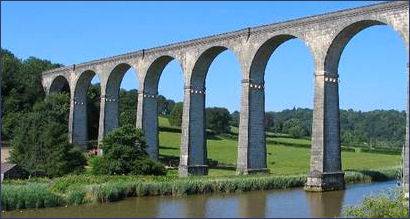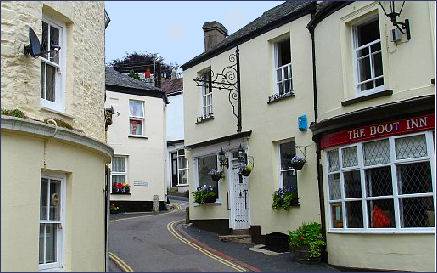Calstock
OS grid ref:- SX4368
 The large village of Calstock, known in Cornish as Kalstok, is situated on the River Tamar, in the north east of Cornwall and lies on the county's border with Devon. The village around 10 miles (16 km) north of Plymouth. Famed for is eclectic mix of festivals, performances by international musicians and art exhibitions the village is well worth a visit.
The large village of Calstock, known in Cornish as Kalstok, is situated on the River Tamar, in the north east of Cornwall and lies on the county's border with Devon. The village around 10 miles (16 km) north of Plymouth. Famed for is eclectic mix of festivals, performances by international musicians and art exhibitions the village is well worth a visit.
Located within the Tamar Valley AONB, some superb scenery may be found around the village, which is overlooked by Cotehele, a Tudor mansion with extensive gardens, the house was the home to the Edgecumbes, one of Cornwall's most influential families, for almost 600 years.
Calstock boasts several art galleries featuring local artists. The village lies on the scenic Tamar Valley railway. Calstock is dominated by a huge viaduct carrying the beautiful Tamar Valley branch line that runs from Plymouth to Gunnislake.
 The superb surrounding landscape includes granite ridges, woodlands and rolling farm land. The River Tamar as many attractive waterfront areas, canoes are available to hire to explore the river. There are many miles of footpaths and other public rights of way. Many of these form part of the East Cornwall Trails.
The superb surrounding landscape includes granite ridges, woodlands and rolling farm land. The River Tamar as many attractive waterfront areas, canoes are available to hire to explore the river. There are many miles of footpaths and other public rights of way. Many of these form part of the East Cornwall Trails.
There has been human settlement in Calstock from Roman, or pre-Roman times, settlers attracted by the rich source of minerals, such as tin, in the areas. A Roman fort, only the third known in Cornwall, was discovered next to the church in 2008.
In Saxon times Calstock was included in the Kingdom of Cornwall, inhabited by the Brythonic Celts, who fiercely resisted the spread the Saxons of the kingdom of Wessex from the east. In the year 838 Wessex had spread as far as the Tamar, and a battle for independence between the Celts and the Saxons was fought near Calstock.
Following the Norman Conquest of 1066, Calstock manor was recorded in the Domesday Book. The Saxon manor was taken over, and in the fourteenth century became part of the Duchy of Cornwall.
The village of St. Andrew was partly constructed in thefifteenth century: the western tower is of three stages and is built of granite. At the east end of each aisle are rectangular windows of three lights. The Edgcumbe Chapel contains two monuments of the late seventeenth century, to Piers Edgcumbe (1666) and to Jemima, Countess of Sandwich (1674). The rectory is the work of Decimus Burton, (1853-54).